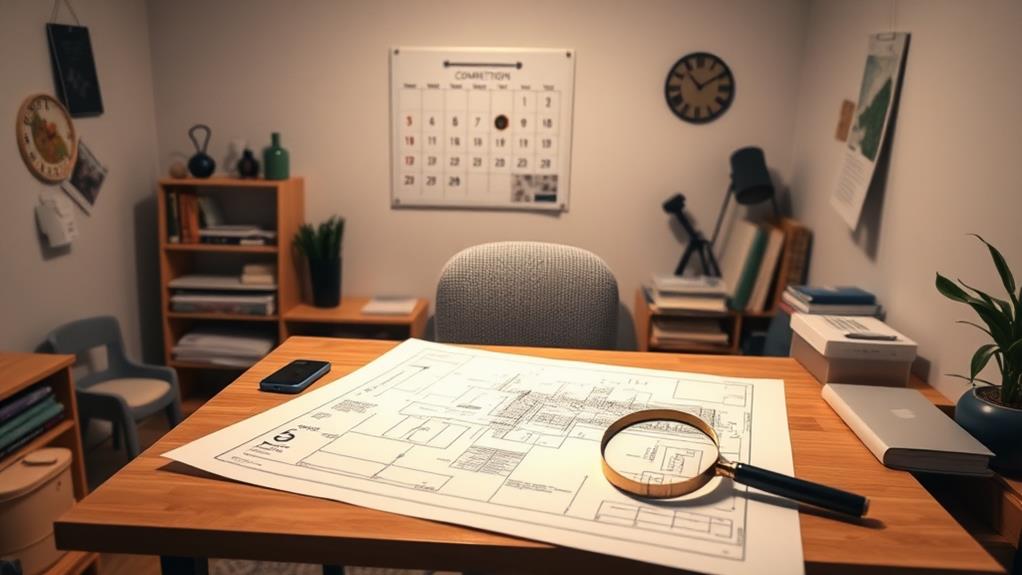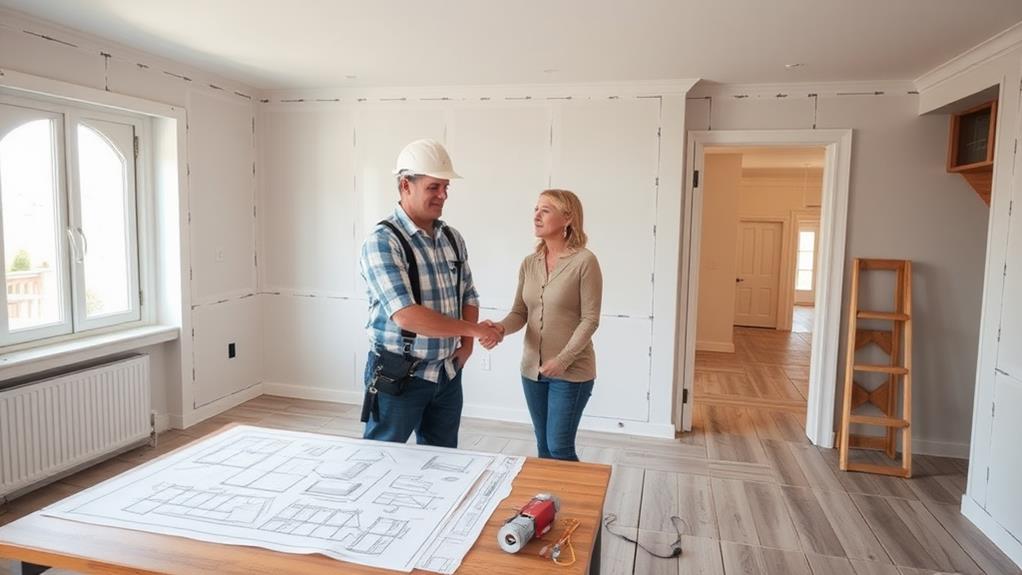To avoid scope creep and stay focused on renovation goals, start by clearly defining project objectives and creating a detailed budget plan. Establish a realistic timeline, breaking the project into specific tasks and phases. Prioritize essential renovations that align with primary objectives, and be prepared to postpone or eliminate lower-priority items if necessary. Effective communication with contractors is crucial; maintain open dialogue while remaining firm on priorities and budget limitations. Regularly review and update the project plan, budget, and schedule throughout the process. By implementing these strategies, homeowners can better manage their renovation projects and achieve desired outcomes without unnecessary complications.
Define Clear Project Objectives

Establishing clear project objectives is the cornerstone of any successful renovation. By defining specific goals at the outset, homeowners can maintain focus and prevent scope creep throughout the process. Start by identifying the primary purpose of the renovation, whether it's increasing functionality, improving aesthetics, or adding value to the property. Create a detailed list of must-have features and desired outcomes, prioritizing them based on importance and budget constraints.
Next, develop a comprehensive project brief that outlines these objectives, including any design preferences, material choices, and timeline expectations. This document serves as a reference point for all stakeholders involved in the renovation, ensuring everyone is aligned on the project's direction. Consider involving family members in this process to gather diverse perspectives and reach a consensus on priorities.
Once objectives are defined, create measurable benchmarks to track progress and evaluate success. These could include specific completion dates for different phases, budget milestones, or quality standards for finishes and installations. Regularly revisit these objectives throughout the renovation to stay on track and make informed decisions when unexpected challenges arise.
Create a Detailed Budget Plan
With clear project objectives in place, the next step is to create a detailed budget plan. This plan should itemize all anticipated expenses, including materials, labor, permits, and contingencies.
Begin by researching costs for each aspect of your renovation, obtaining multiple quotes from contractors and suppliers. Factor in a buffer of 10-20% for unexpected expenses or changes.
Break down your budget into categories, such as demolition, construction, electrical, plumbing, finishes, and fixtures. Prioritize these categories based on your project objectives, allocating more funds to areas that align with your primary goals. Consider the long-term value of your investments, balancing immediate desires with potential future returns.
Be realistic about what you can afford and stick to your budget limits. If the total exceeds your available funds, revisit your project objectives and make necessary adjustments. Consider phasing the project if needed, focusing on essential elements first.
Regularly review and update your budget throughout the renovation process, tracking actual expenses against projections. This diligence will help you maintain financial control and prevent scope creep by providing a clear financial framework for decision-making throughout the project.
Establish a Realistic Timeline

A realistic timeline is crucial for keeping your renovation project on track and preventing scope creep. Begin by breaking down your project into specific tasks and phases, estimating the time required for each. Consider factors such as material delivery times, contractor availability, and potential delays due to unforeseen issues.
Consult with your contractors and suppliers to get accurate time estimates for their portions of the work. Build in buffer time for unexpected setbacks, as renovations often encounter surprises. Be sure to account for any necessary inspections or permit approvals, which can add significant time to your project.
Create a detailed schedule that outlines the order of tasks and their expected durations. Use project management tools or software to visualize your timeline and track progress. Regularly review and update your schedule as the project progresses, adjusting as needed.
Communicate the timeline clearly to all involved parties, including contractors, suppliers, and family members. Set realistic expectations and be prepared to make decisions promptly to avoid delays. By establishing and adhering to a well-planned timeline, you can maintain focus on your original renovation goals and minimize the risk of scope creep.
Prioritize Essential Renovations First
Prioritizing essential renovations is a key strategy for maintaining focus on your original goals and preventing scope creep. Begin by identifying the most critical improvements that align with your primary objectives. These typically include structural repairs, safety upgrades, and functional enhancements that directly impact your daily life or property value.
Create a hierarchy of renovation tasks, placing must-have items at the top and nice-to-have additions at the bottom. This prioritization helps allocate resources effectively and ensures that core project elements are completed before addressing secondary concerns. Consider factors such as urgency, cost-effectiveness, and long-term impact when ranking your renovation priorities.
When tempted to add non-essential upgrades, refer back to your prioritized list and evaluate whether these additions align with your original goals. Be prepared to postpone or eliminate lower-priority items if budget or time constraints arise. Regularly reassess your priorities throughout the renovation process, adjusting as necessary to stay on track. By focusing on essential renovations first, you'll maintain project momentum, reduce the risk of overspending, and increase the likelihood of achieving your primary renovation objectives within the established parameters.
Communicate Effectively With Contractors

Clear communication with contractors is paramount in preventing scope creep and maintaining focus on your renovation goals. Establish a detailed project plan and timeline from the outset, clearly outlining all agreed-upon work. Regularly schedule progress meetings to review completed tasks, discuss upcoming stages, and address any concerns or potential changes.
Document all communications in writing, including emails, text messages, or project management software. This creates a paper trail and helps prevent misunderstandings. Be specific about your expectations, budget constraints, and design preferences. If changes are proposed, request written estimates and carefully consider their impact on the overall project scope and budget before approving.
Encourage open dialogue with your contractors, fostering an environment where they feel comfortable discussing challenges or suggesting alternatives. However, remain firm on your priorities and budget limitations. If scope creep begins to occur, promptly address it with the contractor, referring back to the original project plan and contract. By maintaining clear, consistent communication throughout the renovation process, you can better manage expectations, minimize unexpected changes, and keep your project on track and within budget.
Frequently Asked Questions
How Do I Handle Unexpected Issues Discovered During the Renovation Process?
To handle unexpected issues during renovation:
- Assess the problem's severity
- Consult with experts
- Prioritize necessary repairs
- Adjust your budget and timeline
- Communicate with contractors
- Document changes
- Consider alternatives if needed
- Stay flexible and patient
What Are Common Signs That My Renovation Project Is Experiencing Scope Creep?
Common signs of renovation scope creep include budget overruns, extended timelines, frequent change requests, expanding project boundaries, and adding unplanned features. Contractors may suggest additional work, and you might find yourself considering upgrades beyond the original plan.
Should I Consider Obtaining Permits for My Renovation Project?
A blueprint for compliance: Obtaining permits is crucial for your renovation project. It ensures legal adherence, structural safety, and proper inspections. Permits protect you from potential fines, complications during property sales, and insurance issues. Always consult local authorities for requirements.
How Can I Manage Family Expectations and Input During a Home Renovation?
To manage family expectations during a renovation, establish clear communication channels, set boundaries, and involve them in key decisions. Create a shared vision, prioritize needs versus wants, and regularly update everyone on progress and potential changes.
What's the Best Way to Document Changes to the Original Renovation Plan?
Like a well-maintained ship's log, documenting renovation changes requires precision. Use a dedicated project management tool or spreadsheet to record all modifications, including dates, reasons, and cost implications. This ensures clear communication and helps maintain project integrity.
Conclusion
In conclusion, effective project management is crucial for avoiding scope creep in renovations. By defining clear objectives, creating detailed budgets, establishing realistic timelines, prioritizing essential tasks, and maintaining open communication with contractors, homeowners can stay focused on their goals. However, the theory that strict adherence to initial plans always leads to optimal outcomes may be flawed. Flexibility within predetermined parameters can sometimes yield superior results, allowing for necessary adaptations without compromising the project's core objectives. Balancing structure with adaptability is key to renovation success.

